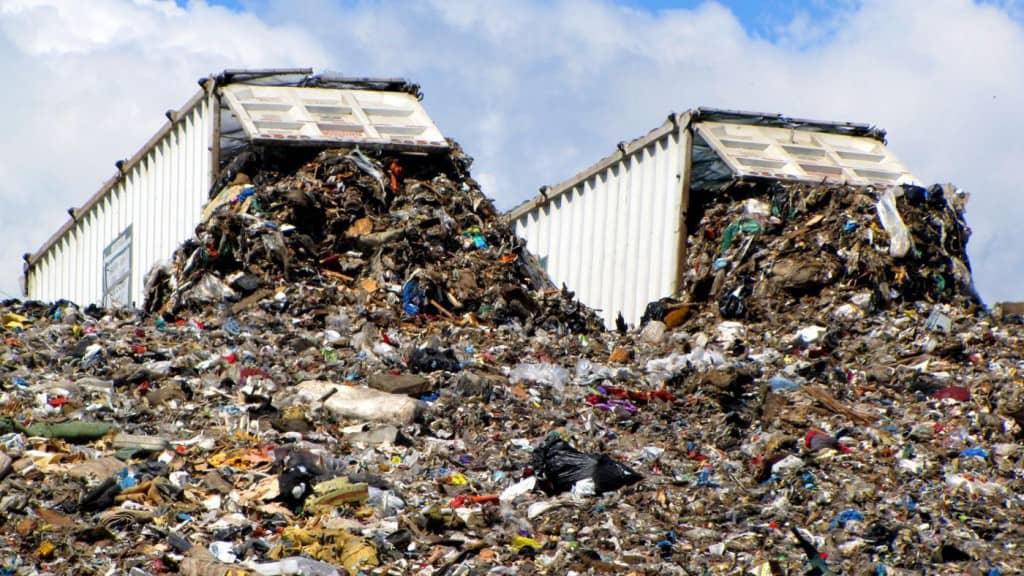The world is the legacy we will leave to our children.

In recent years the problem of rubbish has grown so much that it makes us think that it is normal and that the problem lies in the mismanagement of those who should dispose of it. It seems normal to us that what we throw away becomes a mass of materials that are stored and which sooner or later will decompose or be burned.
Have you ever really thought about the fact that decades of undifferentiated collection have produced landfills full of polluting materials that are slowly entering in the aquifers and in the air we breathe? Have you ever wondered where your children's diapers end up and how much harm they do to the environment, to you, to them, to your descendants and to the rest of the world?
These are questions that a conscious human being should ask himself every time he throws away rubbish, but we often prefere to ignore that we could be a part of the solution because it's hard to change our habit. It's easier to shift the responsibility onto other people, keeping our lifestyle unchanged. But as individuals, as mothers, as families, we have the power to change things and leave a healthier world for our children.
CLOTH DIAPERS ARE GOOD FOR THE ENVIRONMENT
Let's think about our child, who is one of the millions children who lives on Earth, and who in three years consumes an average of 6,000 disposable diapers (once they're used, they generate more than a ton of domestic waste which ends up straight in landfills or incinerators).
Diapers are not biodegradable and in landfill can take from 200 to 500 years as long as they are only stored and not burned, in which case they directly pollute the air and soil through rainfall. Incinerators usually have a filtering system, but if the air really came out clean then no one would be opposed to having it next to their home...
The situation is aggravated by the fact that the "new systems" for storing diapers consist of enclosing them in sealed plastic bags of diaper eaters and thus, isolated from air and water, the times are considerably longer compared to the hundreds of years that they would employ "normally".
In Italy, approximately 6 and a half million disposable diapers are consumed every day for a daily total of 613,000 tons of waste.
This load of rubbish has repercussions not only on individual families who see the tax on rubbish increase with each new birth, but also on the whole community which sees a constant increase in disposal and management costs given by the increase in volumes and the poorer availability of spaces and resources. In those municipalities where the use of washable waste is considered, the tax on rubbish is reduced and indeed there are also incentives for their purchase and in some cases, increasingly widespread, they reimburse 50% of the total on new ones.
Less than 1% of the Italian population (diaper age children) produce 20% of the waste present in landfills. The use of washable nappies can be considered a zero waste practice (if biodegradable poop tissues are not used and in any case even in this case they would have a very low environmental impact).
These considerations only concern the last hours of the life cycle of disposables, but we never think about what it costs to produce them.
For each child, 20 trees are cut down which will be used to obtain the wood pulp necessary for the 6,000 diapers he will use before moving on to the potty, but being unnatural they require other chemical and highly polluting components also at a production level (to find out more read this blog article).
Every day, 12,500 tonnes of plastic, 225,000 tonnes of wood pulp, 2.15 billion liters of oil, 6 billion liters of water, chemical bleaches and thousands of MW of energy are used in European production.
To produce washable nappies, natural raw materials are needed: cotton, hemp or bamboo are usually used, which grow much more rapidly than trees and which do not cause the phenomenon of deforestation (deriving from the production of disposables, as Greenpeace has already denounced in 1993. For their processing, in addition to water and energy, chemical products are used, which however do not leave residues in the fibers and which are therefore considered completely natural and organic. In some cases, synthetic fabrics are used (such as microfleece and coolmax which are used to drain pee and keep the skin dry).
The impact is not only production and disposal, but also the marketing and widespread distribution in shops and supermarkets which occurs with impressive speed precisely due to the very nature of the massive use of the product which makes it a commodity in continuous depletion and of first need.
In Italy, as far as washable items are concerned, there are very few physical shops selling them and they stock few brands and models, while the majority of the business volume concerns the online market which is concentrated on relatively few sites. This considerably reduces the transport of goods even if the impact of the shipment remains to be considered which however has nothing to do with the pollution produced by the widespread diffusion of disposable products.
Another possibility to lower the energy impact is to wash nappies in an ecological way, that is, using class A+++ washing machines, washing at 40° with a full load and air drying, limiting the drying as much as possible.
In short, using washable nappies saves non-renewable resources which are slowly running out and reduces the emission of harmful substances into the air and carbon dioxide into the atmosphere. It is an act of respect that we owe first of all to ourselves and to the Earth that hosts us and nourishes us, but even more towards our children, who will inhabit this world for a long time to come. Every parent, with small steps, can commit to making it a better place!
Share this content












